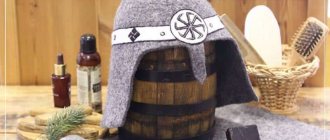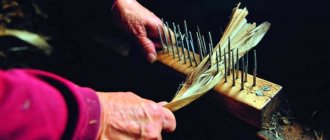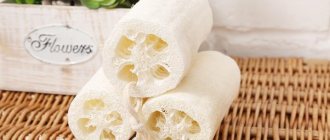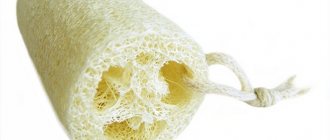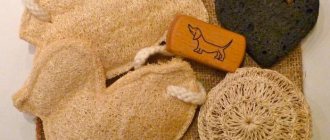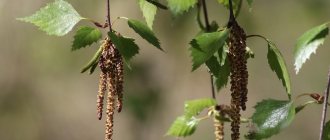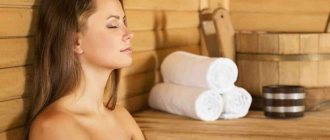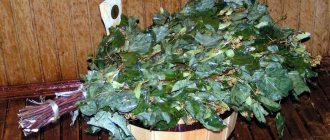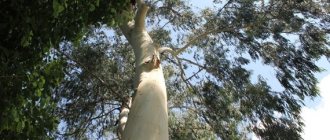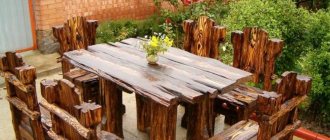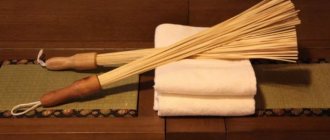A washcloth is a necessary attribute of personal hygiene. Just like a toothbrush, it should be individual for each family member. The effectiveness of hygiene procedures depends on it, so it is important to choose it correctly.
Then it will not only cleanse the skin of impurities. The right body washcloth will act as a massager, get rid of ingrown hairs or cellulite, and replace a scrub. And there is a wide choice - washcloths are made from natural or artificial materials, of different shapes, sizes, and hardness.
Sisal
The natural material is fiber from the leaves of the agave plant. Sisal is mined in Brazil and Mexico. Ropes are woven from coarse, densely twisted fiber, and thin threads are used to make washcloths.
The popular bookmaker has released a mobile application for Android, you can follow the link absolutely free.
Sisal accessories are the toughest washcloths, so you need to choose them wisely. In order not to rip off the delicate skin, it is better to use coarse washcloths. The face is not washed with sisal washcloths; the skin of the heels and feet needs rough cleaning. The accessory will remove steamed corns and calluses well.
Expert opinion
Evgenia Katyshkina
Household and farm management specialist
Sisal washcloths should be regularly treated with antimicrobial compounds and dried well. With proper use, it is suitable for use for six months.
Bars, flowers, mittens...
The color and shape of the washcloth is largely a matter of taste. The most important thing is that it is comfortable to hold.
It is convenient when the washcloth has long loops or handles that you can grab onto. Instead of a hard washcloth, you can use a natural or soft synthetic bristle brush with a long handle. It is good for hard to reach places. With the help of such a brush you get an excellent anti-cellulite massage of the thighs and buttocks.
Bright foam washcloths in the shape of various animals are impractical for washing, but they are good for those kids who do not like to bathe: with toy washcloths it is easier to survive the dressing down from their parents. And in the first year it is better to wash children with a washcloth-mitten - flannelette or terry.
Jute
Jute fiber is well known to land owners; durable bags are made from the fibers. Fine threads make excellent washcloths. In terms of rigidity, jute accessories are slightly inferior to sisal ones, but they also clean the body of dirt well. You can use jute washcloths to wash your entire body, not just rough areas of the skin. Usage period is up to 5 months.
To soften a new jute sponge, soak it in boiling water for at least 6 hours. Some housewives pre-soak the product in water with boric acid - this way the jute fiber becomes not only soft, but also safe for allergy sufferers.
Crochet washcloth, work from our readers
Crochet washcloth. Master class from Noskova Nadezhda
The washcloth is crocheted in the round from elongated loops. Polypropylene threads.
Crocheted washcloth. Oksana's work
You will need yarn for knitting washcloths and a size 4 hook.
Loofah
The loofah looks like a hollow “zucchini” with a fibrous “skin”. And, by the way, the plant is classified as a pumpkin species; loofah is grown in Africa. Among the variety of loofahs, there are varieties from which washcloths and water filters are made, and there are also types suitable for consumption.
Some gardeners grow loofahs in their plots, but ready-made loofahs are also inexpensive. The accessory lasts until it wears out. When wet, the washcloth is soft and convenient for washing the entire body, including delicate skin. The natural properties of the loofah will be appreciated by all beauties - a washcloth will replace the most expensive and effective scrub. Small particles of fiber do a good job of cleaning off the top rough layer of skin, washing off the body without any residue.
Eco-friendly, inexpensive and safe dishwashing sponges
When the loofah sponge becomes unsuitable for use in the bathroom, it should be cut into washers and used for washing dishes.
Medium hard sponges
This is ideal for all skin types. Gently exfoliate, remove impurities, but do not damage the upper layer of the epidermis. This washcloth is suitable for massage and activates blood circulation. Frequent use is not recommended for people with sensitive skin.
KAI Body washcloth – towel with plant fibers
The washcloth is made in the form of a towel measuring 100 by 30 cm. It washes well, opens pores, and forms lush foam. Made from cotton fabric with the addition of hemp fibers.
Has a massage effect and increases blood circulation. Can be used for sensitive skin. Wash with soap and shower gel. May cause allergic reactions.
Pros:
- natural material;
- can be folded and used as a sponge;
- easy to wash, dries quickly;
- medium hardness.
Minuses:
- difficult to adapt to size;
- expensive.
OH:E Cure series - 100% nylon
This towel measures 100 x 28 cm. Made from nylon fiber. Has a massage effect, cleanses, opens pores. But it does not injure even thin skin, but invigorates, makes it smooth and soft. The fabric is thin, easily bunches up, and creates a lot of foam. Suitable for daily use.
Pros:
- convenient to use;
- foams any soap well;
- easy to rinse;
- convenient to take on trips - lightweight, dries quickly;
- resistant to high temperatures;
- strong and durable.
Minuses:
- some find it too soft and thin;
- difficult to get used to because of the size;
- expensive.
Lyko
Only thin and soft parts of young linden bark are suitable for weaving washcloths. Sometimes the top layer of bark is removed from other deciduous trees, but linden has special properties - it cleans pores well and deeply, disinfects the skin, and helps heal wounds.
When heated, bast sponges release phytoncides that kill microbes and pathogenic microflora. The disadvantage of bast is low foaming. In addition, particles of material quickly clog the drain hole, which is why washcloths are most often used in bathhouses.
After washing, the washcloth should be dried thoroughly and soaked in boiling water once a week to eliminate germs. The period of use is no more than 2 months, the washcloth will quickly become worn out.
Ramie
This is a crop that is grown for technical needs. Chinese nettle or ramie fiber is extremely durable and can withstand changes in temperature and humidity. There is no need to dry such an accessory, but rinsing it with peroxide from time to time won’t hurt. The hardness of the washcloth is average, the accessory lasts for about 4 months.
To soak a ramie fiber washcloth, soak the product in boiling water for 3 hours. If there is any doubt about the purity of the material, add half a glass of baking soda to boiling water. After soaking, rinse the washcloth under running clean water.
Birch bark
Natural washcloths, which are used very rarely today. Birch bark is a moisture-resistant material of high strength. Birch bark has antiseptic properties, so such washcloths should definitely be in a house where there are small children, people with allergies, and elderly family members.
Initially, the washcloth will be hard; over time, the fiber will soften, but it will not lose its ability to clean pores well.
Natural bristles
Pig bristles or horsehair are popular materials for making washcloths. Products made from horsehair are more expensive, but short bristles last longer and clean rough areas of the skin better.
There are two types of brushes:
- the bristles are sewn onto the base, letting the ends out, you get a regular brush with a handle;
- Horse hair is woven into ropes, which are then tied into a washcloth in the form of a cloth, mittens, etc.
Both types of products cope well with cellulite and fluid stagnation in the muscles. Natural hair and stubble are not afraid of abrasives, so they can be used together with scrubs and anti-cellulite creams, during dry massage.
What natural products can replace washing powder?
Varieties depending on color and hardness
Despite the huge number of types of washcloths, the most important factor in choosing one is the hardness, which depends on the color. There are pink, green, and yellow exfoliating pads, each suitable for a specific skin type and age.
Pink
The softest variety. Designed for young, sensitive, slightly keratinized skin. Often used as a massage tool, which prevents the accumulation of old skin cells, ingrown hairs and has a positive effect on blood circulation and body tone.
Green
The green washcloth is slightly harsher than the pink one. It represents the golden mean. Its use is aimed at exfoliating middle-aged skin, which has a tendency to accumulate dead cells.
Yellow
The heavy artillery of the world of exfoliating washcloths. Used for skin thirsty for cleansing and renewal, the peeling of which has been delayed for a long time. With such a washcloth you can exfoliate everything, the main thing is not to overdo it. Also used for aging skin whose tone needs to be maintained.
It is important to choose a washcloth wisely, having decided on your skin type, otherwise you can get damaged from a washcloth that is too hard. If you are not sure about your choice, it is better to start with a soft washcloth.
Natural sea sponge
Sea sponge is the only natural material that lasts an incredibly long time. When dry, the sponge can be hard, but in water it instantly softens, foams well and does not cause allergies.
It is permissible to use a sponge to wash delicate areas of the skin, face, and bathe babies. The material gently cleanses pores, iodine components and active biological substances promote wound healing, help cure inflammation, and relieve peeling.
Washcloths made from sea sponge are characterized by a high degree of softness, so they are not suitable as a natural scrub, and it is better not to use the product with abrasive compounds, so as not to clog the pores of the sponge.
What it is?
Are you a connoisseur of smooth porcelain skin, without a hint of cellulite or unevenness? Looking for a way to improve your skin? Pay attention to special washcloths! These best friends of peeling, made of hypoallergenic material, due to their special weaving and rigidity, provide ideal cleansing of dead cells without damaging the skin.
These products are easy to use, help improve skin tone, cleanse it perfectly, make it soft and tender. And all this for a low cost. It would seem that a washcloth is such a small thing in our bathroom, but how many useful functions it carries!
Characteristics and Features
- For peeling, abrasive sponges made of viscose are mainly used.
- They have varying degrees of hardness.
- Suitable for all skin types, hypoallergenic.
- Designed for multiple use.
- They come in various forms and types, with natural additives.
- Cheap, easy to use.
Main advantages
Peeling sponges have different hardness, shape and composition. You can make the choice yourself. When used correctly, the washcloth will last a very long time, acting more effectively than any chemical peeling or scrub.
We recommend: What is azelaine peeling and what are its features? Indications and technique, side effects
Can be used without special cream textures or soap, therefore saving your time. The washcloths are suitable for all people as they are hypoallergenic. With prolonged use, they provide an amazing tonic and corrective effect.
After each use, rinse the washcloth well, dry it at room temperature, do not heat it. Washcloths do not like contact with hot water; they shrink and dry out, losing their texture.
Keep the washcloth away from water to prevent accidental soaking.
Advantages and disadvantages of washcloths made from natural materials
Durable and practical washcloths made of jute and sisal can be knitted with your own hands. A bale of fiber costs about 500 rubles; if you make washcloths the length of 2 adult’s palms, you will get at least 200 pieces from one bay. The weaving process is easy to master even for a preschooler. One bay can provide your entire family with washcloths for 10 years.
And more about the benefits of natural sponges:
- Do not cause allergies. An exception concerns the sea sponge - iodine, which is part of the animal, can provoke a negative reaction.
- Ecological cleanliness. After the end of use, the materials decompose into safe components.
- Lets air through.
- Can be used as a natural scrub.
- When heated, they do not emit harmful substances.
- They serve for a long time.
Minuses:
- natural materials take a long time to dry;
- in comparison with artificial materials, natural ones are much tougher;
- period of use is no more than 6 months (excluding natural sea sponge).
Some natural washcloths are more expensive than artificial ones, but the cost is compensated by the absence of harmful emissions and the environmental friendliness of the products. In addition, the natural material will help cope with inflammation, areas of peeling and remove calluses and corns without the use of special products.
How to choose a good washcloth?
Oh, how many interesting shower and bath accessories you can find in stores: washcloths, mittens, brushes... Soft and hard, of all kinds of shapes and colors. Choosing a washcloth is a special pleasure. Today we’ll talk about why it is important to give preference to natural materials, and whether an ordinary washcloth can affect the cleanliness of the planet.
Katerina Kudertseva, blogger06/13/2019
Washcloths are made from different materials, but they can all be divided into two large groups:
- artificial (foam rubber, polyethylene, nylon);
- natural (linen, loofah, cotton, jute, sisal, bristles, bast, sea sponge, etc.).
Artificial sponges dry faster, whip up foam well, have an extremely low price and a rich palette. However, their disadvantages outweigh all their advantages: increasingly, synthetic sponges cause allergic reactions, including due to aggressive dyes. The moist environment and soft, porous texture of a plastic sponge are ideal for fungi and bacteria to grow, especially if you leave them in a damp bathroom. And, of course, neither foam sponges, nor mitten washcloths made of nylon threads, nor polyethylene mesh washcloths for whipping foam are recyclable and take several hundred years to decompose, polluting the environment. microplastic particles invisible to the eye are sent into the drain along with soapy water .
Washcloths made from natural materials are environmentally friendly, hypoallergenic, and have varying degrees of hardness. A wide range of prices allows you to choose a bath accessory to suit any budget. Among the disadvantages is a short service life, but this cannot be called a disadvantage. Any washcloths, regardless of the materials from which they are made, must be changed every 2 months.
I am for reasonable consumption, and I do not encourage you to throw away the artificial washcloth that is on the shelf in your bathroom. Use what you buy, but remember that there are natural, eco-friendly alternatives.
Let's start with the most delicate washcloths, which will be a good alternative to foam sponges and nylon mittens.
LOOFAH
People with sensitive skin prone to allergies should pay attention to loofah sponges and sponges. This is a spongy plant from the pumpkin family. The material is hypoallergenic and gently exfoliates dead skin cells. Loofah dries quickly and hardens after drying, which prevents the growth of bacteria. But its main advantage is that it does not emit harmful substances during use and completely decomposes under natural conditions without harm to the environment.
To make the washcloth softer, soak it in warm water for several minutes. After compression, the loofah easily returns to its original shape. Perhaps shower gel or soap does not foam as actively on it as on a foam sponge, but, in my opinion, this is quite enough.
Such washcloths are often found on sale and are inexpensive. By the way, a loofah can perfectly replace a sponge for washing dishes.
CELLULOSE
This material has many advantages - a cellulose sponge very delicately massages the skin and whips up foam perfectly. Often, not only washcloths are made from cellulose, but also facial sponges. Cellulose sponges are an excellent alternative to foam rubber counterparts and disposable cotton pads. Thanks to its fine-pored structure, this sponge is ideal for removing masks (for example, clay ones), as well as for removing makeup using cleansing milk.
When choosing a sponge or sponge made from cellulose, pay attention to the FSC certificate. It confirms that the wood used to produce pulp comes from renewable sources.
LINEN, COTTON, BAMBOO FIBERS
Washcloths made from natural materials such as linen, cotton and bamboo are true all-rounders. You can use them with or without soap, wet for washing or dry for lymphatic drainage massage. They whip up foam well and are machine washable (t 30°C). In addition, such washcloths are very convenient, because... They are often made in the form of mittens.
What to look for when choosing?
- Quality of raw materials. Choose washcloths made from organic raw materials, grown without pesticides.
- Treatment. Choose washcloths made from unbleached materials. Chlorine is used for bleaching, and it is very toxic. In the United States, chlorine ranks first among chemicals that cause poisoning both at home and at work. In addition, chlorine is produced during the electrolysis of sea water, which requires large energy costs, and during production a number of toxic products are released. Perhaps such washing accessories will not pamper you with bright colors, but they will be as safe as possible for your skin and the environment.
I really like the German double-sided massage mittens Forster's . One side is made of organic cotton, it is very delicate and soft. The second one is made of linen, it is a little tougher. The hard side massages well, while the soft side is suitable for even the most delicate areas of the body.
The brand also has washcloths made from bamboo , which has antifungal and antimicrobial properties. They will be a good choice for those with problem skin.
Those who like “something tougher” should remember that hard washcloths and brushes should not be used on damaged or inflamed skin.
JUTE
Jute fiber is quite rigid, which ensures effective exfoliation of dead cells of the upper stratum corneum of the skin. After a massage with a jute washcloth, the skin becomes firm, smooth and has a healthy glow. True, such a washcloth does not create foam very well, so it is better to use it for massage or instead of a scrub. A jute washcloth will be an excellent assistant in the fight against cellulite. But it is not suitable for children or sensitive skin.
Before using it for the first time, it is recommended to steam a jute washcloth in boiling water (for about 15 minutes), and then rinse thoroughly. You need to dry jute washcloths in a well-ventilated area. Not in the bathroom! Then the washcloth will not crumble and will last a very long time.
HORSEHAIR
Horsehair brushes are suitable for an invigorating massage in the shower or bath, with or without soap. Such bristles have sufficient rigidity, but do not injure the skin at all. I use a horsehair brush for dry massage, but it can also be used for washing. about massage with a dry brush , so we won’t repeat it today.
HOW TO CARE FOR WASTES AND BRUSHES MADE OF NATURAL MATERIALS
To extend the life of your bath accessories and prevent the growth of harmful bacteria, you need to follow simple rules.
- After each use, rinse the washcloth/brush with running water.
- Once a week, wash your brush (wash the washcloth) with natural shampoo without SLS and silicones. Use a washing machine if the structure of the material from which the washcloth is made allows it.
- After each use, dry the washcloth/brush in a well-ventilated area. When drying, the brush should be placed on a clean towel with the bristles down.
- Change washcloths made from natural materials every 2 months.
And yet, if you want to provide your skin with proper care, listen to the recommendations of cosmetologists. They advise purchasing two washcloths at once. One hard one, for example, made of jute, for deep cleansing of the skin and massage of problem areas. The other is softer for daily use. For example, a sponge made of cellulose or flax.
Today we are convinced that natural washcloths and washing brushes are not only not inferior to their synthetic counterparts, but even superior to them. They are environmentally friendly, safe for the skin, do not cause allergic reactions, have different degrees of hardness, exfoliate the skin well, and can be used for both washing and massage. Try it yourself.
Author's blog on Instagram katrin_ecotrue
